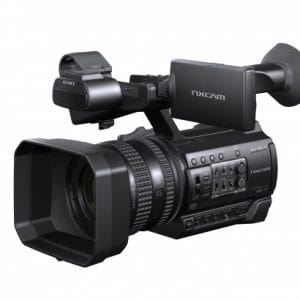
Canon C500M2
Key Features
- Full-Frame CMOS Sensor, DIG!C DV 7 Chip
- Full-Frame, Super 35, and Super 16 Modes
- DCI 4K/2K, UHD 4K, and HD Modes
- User-Changeable Lens Mounts
The Canon EOS C500 Mark II 5.9K Full-Frame Camera Body is part of the Cinema EOS lineup of cameras, and it features a full-frame CMOS sensor with an effective 18.69MP resolution. This allows it to feature a 5.9K output in full frame, and crop (window) the sensor for Super 35 and Super 16 frame sizes while maintaining a high resolution. The C500 Mark II comes with a Canon EF mount and features an interchangeable lens mount system, allowing you to swap out the mount in the field for an optional Cinema Locking EF or PL mount, thus greatly expanding the amount of glass you can use with the camera. The sensor features over 15 stops of dynamic range and Dual Pixel autofocus support, and the camera uses a DIG!C DV 7 chip for image processing.
The camera internally records raw using the Canon Cinema RAW Light codec in 12- or 10-bit, or you can capture using the XF-AVC codec in 10-bit. Internal recording is done to CFexpress cards via two CFexpress card slots. 8-bit proxy recording in the XF-AVC codes, as well as JPEGs, can be captured onto an SD card via the built-in SD card slot. Supporting a variety of gamma settings including Canon Log 2 and Log 3, as well as supporting a variety of color gamuts including Cinema BT.2020, DCI-P3, and legacy BT.709. LUT importing is supported of course. The camera supports four channels of 24-bit, 48 kHz linear PCM audio recording.
Sensor
DIG!C DV 7 Image Processor
Interchangeable Lens Mounts
Dual Pixel CMOS AF with support for Touch AF and Face Detection AF
- DAF technology utilizes the fact that each pixel in the camera’s CMOS sensor is configured with two photodiodes. Two independent image signals can then be detected at each photosite and compared using phase-difference to provide autofocus with compatible lenses. DAF can survey the scene and recognizes not only whether the subject is in focus or not, but in which direction (near or far) and by how much. Enabling auto-focus lenses to react when necessary and not have to “hunt” for focus.
- DAF technology can also be used to aid in manual focus. Focus information is translated to an on-screen guide that conveys to the operator the subject’s current focus and direction to move in order to achieve focus. When sharp focus is achieved, the indicator turns green as a clear indication.
- You can also use DAF and the camera’s touchscreen LCG to simulate a focus pull using preset locations. After setting two separate focus locations on the screen, the camera’s set button can be used to alternate between the two focus points. The focus racking effect can be fine-tuned by adjusting AF tracking speed and response.
Focus Control/Assist
Please note: Only lenses that support AF functions can be used in these modes.
Shutter Settings
Electronic Image Stabilization
Canon



Reviews
There are no reviews yet.